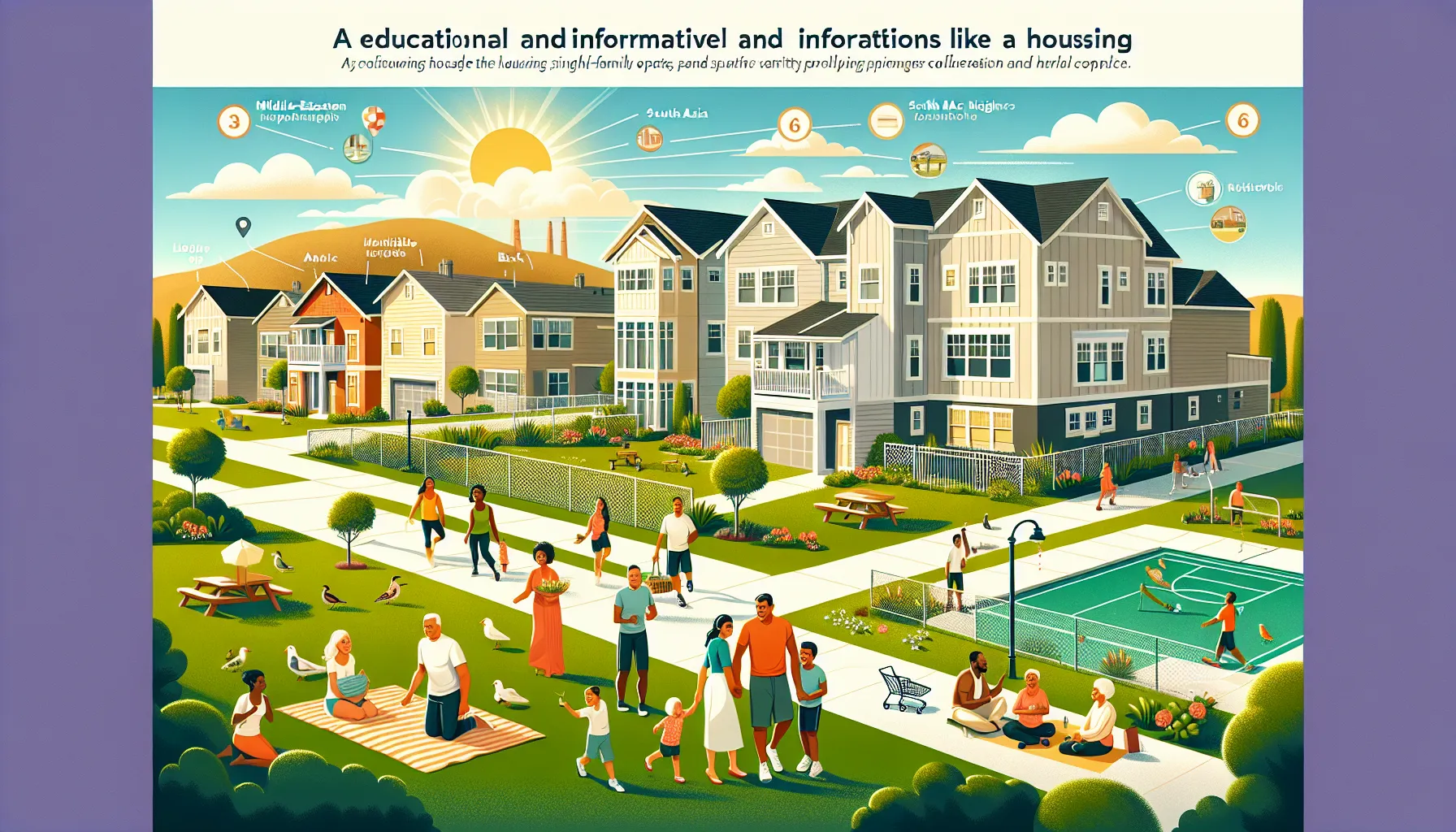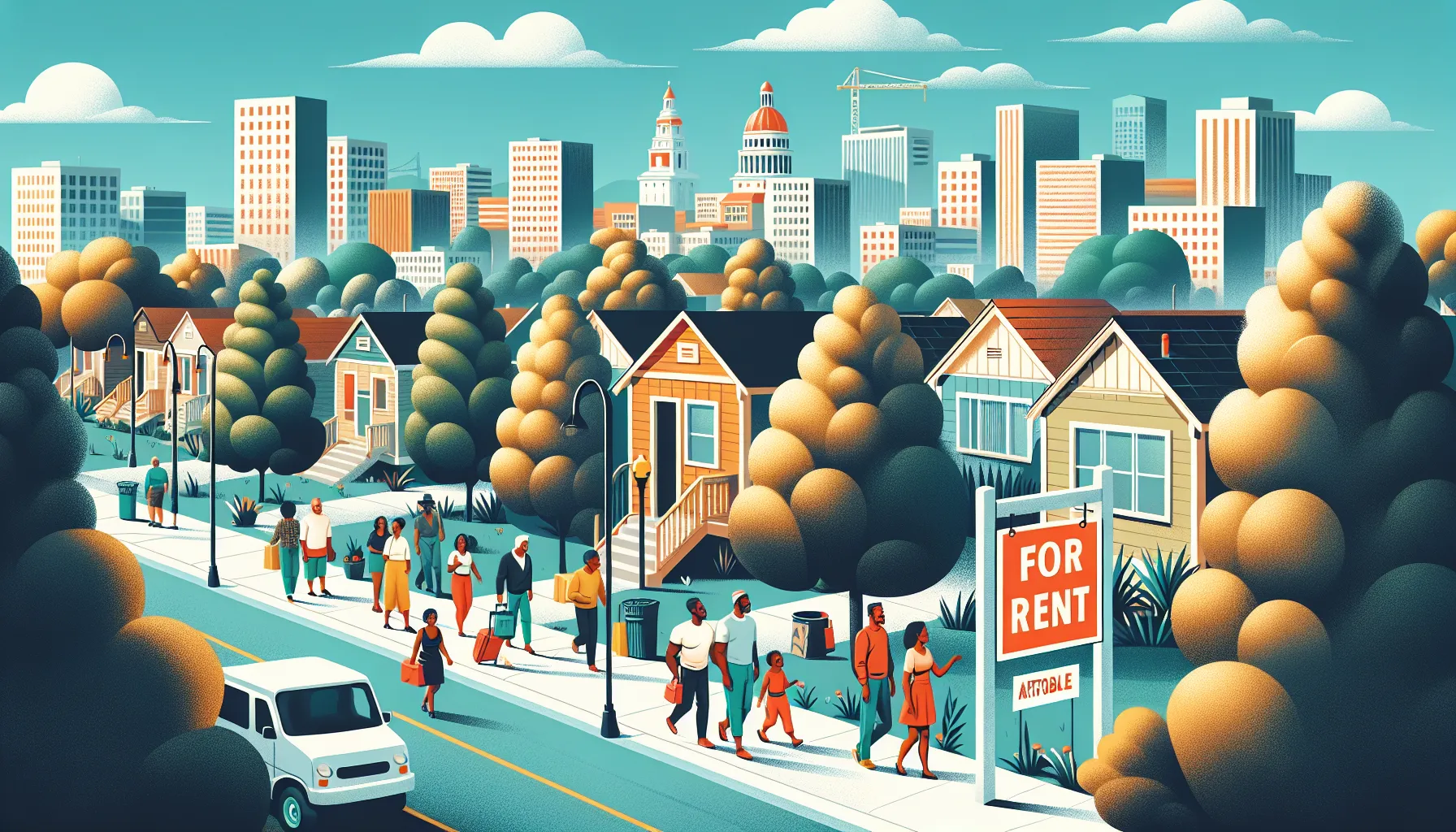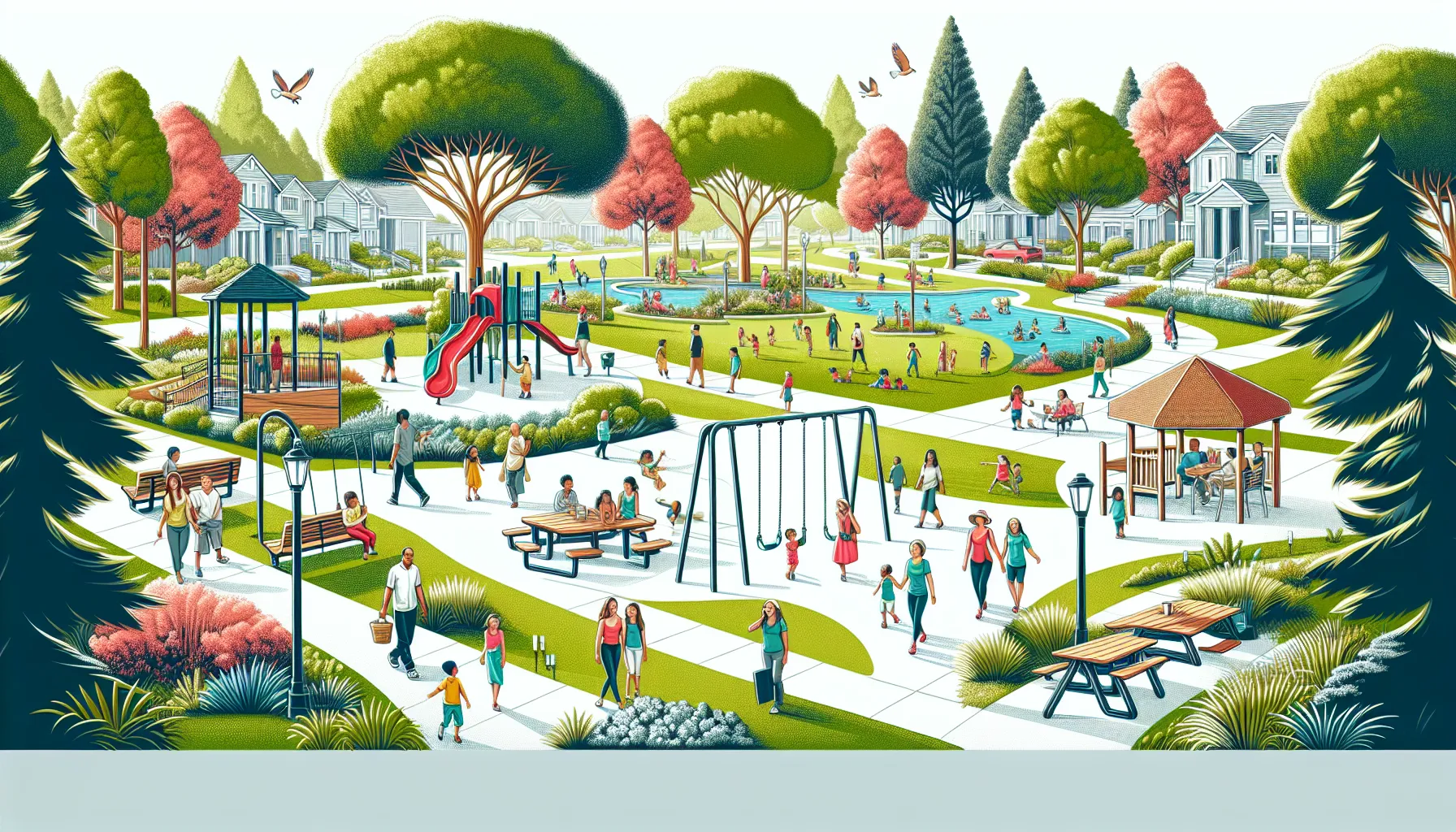Key Takeaways
- Oakley offers affordable housing options with lower costs compared to nearby East Bay cities, making it an attractive choice for buyers and renters alike.
- A variety of housing types are available, including single-family homes and modern apartments, catering to different lifestyles and budgets.
- Community amenities enhance livability, with access to parks, schools, recreational spaces, and essential services fostering a family-friendly environment.
- Proximity to employment hubs and local job opportunities provide a balance of affordability and convenience for working professionals.
- Challenges include rising demand and infrastructure limitations, which may impact housing availability and daily commute efficiency.
- Future development plans focus on sustainability, improving infrastructure, and preserving affordability while maintaining Oakley’s community-driven appeal.
Finding affordable housing can feel overwhelming, especially in a competitive market. If you’re considering Oakley, you’re not alone—this growing community offers a balance of comfort and opportunity. But how do you identify options that fit your budget without compromising on quality or convenience?
Oakley stands out for its welcoming neighborhoods and accessible price points compared to other areas. Whether you’re a first-time buyer or looking to rent, there are options that meet both practical needs and long-term goals. What kind of home fits your vision, and how can you make the most of what Oakley has to offer?
By understanding the local housing landscape, you can make informed decisions that bring you closer to the lifestyle you want. Let’s explore how Oakley provides affordable choices without sacrificing the sense of community and comfort many seek.
Overview Of Affordable Oakley Housing
Oakley offers a welcoming environment with a variety of affordable housing options. The city is known for its quiet neighborhoods, family-friendly atmosphere, and accessible price points, making it appealing to renters and buyers alike. These features make it a popular choice for individuals looking to balance cost-effectiveness with quality living.
Home prices in Oakley generally fall below regional averages, providing opportunities for those on a budget. Rental properties also follow this trend, with options ranging from single-family homes to modern apartments. This mix gives potential residents the flexibility to find a living situation that meets their financial needs.
The city’s affordability doesn’t compromise its desirability. Essential amenities, schools, and recreational spaces are readily available across neighborhoods. Oakley’s proximity to other East Bay cities adds convenience for those needing access to larger urban centers without facing excessive housing costs.
What are you looking for in your next home? Whether it’s ample space, proximity to work, or access to community resources, Oakley’s housing market offers you room to make decisions that fit your lifestyle.
Key Features Of Affordable Oakley Housing

Affordable housing in Oakley blends reasonable costs with comfort and modern convenience. Oakley attracts individuals and families searching for budget-friendly living with excellent community perks.
Cost Of Living
Oakley’s cost of living remains lower than many surrounding cities in the East Bay. Housing expenses, which form a significant part of living costs, are more manageable here compared to nearby urban areas. Other essentials like utilities, groceries, and transportation also tend to align with affordability. Are you looking for a place where your living expenses stay within your budget while still enjoying a comfortable lifestyle?
Housing Types And Availability
Oakley’s housing market offers a range of options to suit different needs. Single-family homes dominate many neighborhoods, providing spaces for families or those needing additional room. Modern apartment complexes cater to renters who prioritize convenience and minimal upkeep. Entry points into homeownership are also accessible, thanks to competitive pricing. Have you considered which type of housing fits your current stage of life or preferences?
Community Amenities
Oakley’s amenities significantly enhance its appeal. Parks, well-maintained trails, and recreational spaces offer opportunities for outdoor activities. Schools in the area support educational needs, and local shopping and dining add convenience. With a strong sense of community, Oakley fosters connections and a welcoming environment. Would a neighborhood with these features make your daily life more fulfilling?
Benefits Of Living In Affordable Oakley Housing

Affordable housing in Oakley offers a mix of practical advantages and lifestyle perks. With lower housing costs compared to neighboring cities, residents often enjoy more financial security without sacrificing quality of living.
Budget-Friendly Options
Oakley’s housing market includes homes and apartments that fit various budgets. Many listings fall below the regional average, providing opportunities for first-time buyers or renters with limited financial resources. Single-family homes offer space for growing families, while smaller apartments cater to young professionals or retirees. How important is finding a balance between cost and comfort to you?
Access To Public Services
Residents benefit from essential public services that Oakley maintains at reasonable costs. Schools, healthcare facilities, and public transportation are accessible throughout the area. Parks and recreational amenities are well-maintained and offer spaces for leisure and family bonding. Do you prioritize having essential services within close reach?
Local Employment Opportunities
Oakley’s location offers proximity to job markets in neighboring cities while also providing local employment options. The city itself hosts opportunities in education, retail, and healthcare industries. For those commuting, easy access to major roadways connects Oakley to larger employment hubs without the financial burden of higher housing expenses. How would a shorter commute or nearby job prospects improve your daily life?
Challenges Facing Affordable Oakley Housing

Affordable housing in Oakley presents opportunities, but it isn’t without challenges. Understanding these issues helps potential buyers and renters prepare for making informed decisions.
Rising Demand
With Oakley’s growing reputation for affordable housing, demand is increasing. The city’s accessibility to larger East Bay areas and its lower cost of living attract a diverse population. This surge in interest limits housing availability and increases competition. Are you finding it harder to secure a home that fits your budget? Rising demand also affects rental markets, leaving fewer choices at lower price points.
Limited Infrastructure
Oakley’s infrastructure has struggled to keep up with its population growth. Limited public transportation options and road congestion affect daily commutes. The strain on schools and local healthcare facilities also impacts the community’s ability to meet residents’ needs. Would additional infrastructure improvements make your housing decision easier? The city’s expansion requires balancing affordability with access to quality amenities.
Long-term Sustainability
Balancing Oakley’s affordability with sustainable development remains a challenge. Rapid growth creates pressure on natural resources, and unchecked expansion risks reducing the city’s appeal. Does the pace of development align with preserving Oakley’s character? Sustainable planning is key to ensuring affordable housing lasts while maintaining a vibrant, livable community.
Future Prospects For Affordable Oakley Housing

Oakley continues to grow as a sought-after destination for affordable housing. Development trends point to increased construction of housing options that cater to both families and individuals. With a mix of single-family homes and apartments, Oakley is set to offer more opportunities for those looking to secure budget-friendly living arrangements.
City planners are focusing on sustainable growth while improving infrastructure. Efforts to expand public transportation and ease congestion aim to support the rising population. These improvements could enhance accessibility for residents commuting to other East Bay cities and foster better connections within the community.
How will Oakley maintain its affordability amidst growing demand? Addressing housing availability remains crucial. Incentives for developers to build affordable units and projects emphasizing mixed-income neighborhoods can help balance the market. Potential initiatives like these aim to secure housing options that remain within reach for diverse income levels.
Emerging job opportunities may strengthen Oakley’s housing demand. Proximity to expanding industries and neighboring employment hubs increases the housing market’s appeal. This growth directly impacts residents, providing a chance to live close to work without exceeding financial limits.
The emphasis on recreational spaces and community amenities remains a key aspect of future housing plans. Developing parks, trails, and gathering spaces ensures homes in Oakley offer a well-rounded living experience. Are these aspects of Oakley’s planning what you value most when considering a move?
Conclusion
Affordable housing in Oakley presents a unique blend of opportunity and challenge. With its budget-friendly options, strong community vibe, and ongoing developments, it’s a promising choice for many. While rising demand and infrastructure hurdles can’t be ignored, the city’s focus on sustainable growth and improved amenities signals a bright future. For anyone considering a move, Oakley offers a chance to balance affordability with quality living, making it a place worth exploring.
Frequently Asked Questions
1. Why is Oakley an attractive option for affordable housing?
Oakley offers lower housing costs compared to many East Bay cities, making it ideal for first-time buyers and renters. The city boasts welcoming neighborhoods, essential amenities, and recreational spaces, making it a budget-friendly yet desirable place to live.
2. What types of housing options are available in Oakley?
Oakley provides a mix of affordable housing, including single-family homes and modern apartments. These options cater to varying lifestyles and budgets, ensuring something for everyone.
3. How does Oakley’s cost of living compare to nearby cities?
Oakley’s cost of living is generally lower than many surrounding East Bay cities, with more manageable housing expenses and affordable essentials, making it a more economical choice.
4. What are the challenges of finding affordable housing in Oakley?
Rising demand for housing in Oakley has led to limited availability and increased competition. Additionally, infrastructure and public transportation challenges can complicate daily commutes.
5. Are there any plans to improve housing availability in Oakley?
Yes, city planners are prioritizing sustainable growth, with increased construction of budget-friendly housing and plans to expand public transportation for the growing population.
6. What are the benefits of living in affordable housing in Oakley?
Affordable housing in Oakley offers financial security, access to excellent schools, recreational spaces, and a strong sense of community, enhancing the overall living experience.
7. Is Oakley a good choice for families?
Yes, Oakley is family-friendly, with affordable housing, good schools, outdoor recreational areas, and community-focused neighborhoods, making it an excellent choice for families.
8. How does the job market impact housing demand in Oakley?
Emerging job opportunities in nearby industries are driving housing demand in Oakley, creating a growing interest in the community while maintaining affordability.
9. What can I do to increase my chances of finding affordable housing in Oakley?
Start by monitoring local real estate listings and working with a local agent. Being prepared with financing and acting quickly can increase your chance of securing affordable housing.
10. How can Oakley maintain housing affordability despite rising demand?
Oakley is exploring solutions like developer incentives, mixed-income neighborhoods, and sustainable city planning to balance affordability with growth.
